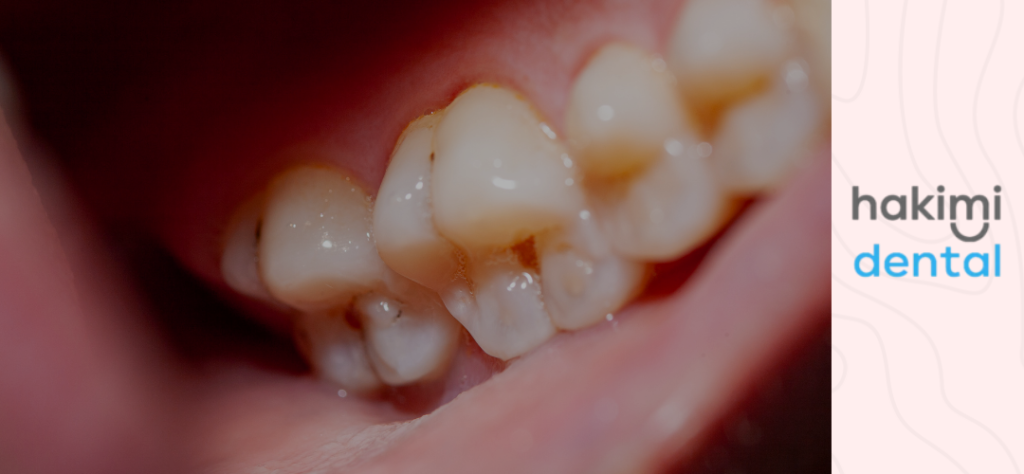Dental problems can occur when you least expect them. Whether it’s a chipped tooth, a cavity, or a treatment that needs more time, temporary dental fillings offer a simple yet effective solution. As the name suggests, a temporary dental filling is not meant to last forever but plays a vital role in protecting your tooth until permanent treatment can be completed.
In this blog, we’ll explain why temporary dental fillings are used, how they work, and what to expect when you get one. We’ll also provide aftercare tips and answer common questions to help you feel more confident about managing your dental health between appointments.

What Is a Temporary Dental Filling?
A temporary dental filling is a short-term solution used to protect a damaged or decayed tooth until more permanent treatment can be provided. This filling is made of softer materials than a permanent one, such as zinc oxide, glass ionomer, or other compounds, which allows it to be easily removed by your dentist.
Temporary fillings are used for various reasons, including when a patient is undergoing multiple stages of dental treatment or requires a short-term solution to alleviate pain or discomfort.
At Hakimi Dental Clinic, we often use temporary dental fillings to protect teeth and relieve discomfort while preparing for more comprehensive treatments like crowns, inlays, or root canal therapy.
Why Would You Need a Temporary Dental Filling?
There are several scenarios where a dentist might recommend a temporary dental filling. Understanding when and why these fillings are used can help you feel more informed and reassured about the process.
1. To Protect a Tooth After a Root Canal
Root canal treatment involves removing infected or damaged tissue from the inside of a tooth. After the procedure, it’s important to protect the tooth while waiting for a permanent filling or crown. A temporary dental filling seals the tooth, keeping bacteria out and allowing it to heal.
2. When Waiting for a Permanent Restoration
If you’re getting a dental crown, inlay, or onlay, the process typically takes more than one appointment. A temporary filling protects the prepared tooth in the interim, preventing further damage or decay until the permanent restoration is ready.
3. For Emergency Dental Care
Temporary dental fillings are often used in emergency situations, such as when a tooth has chipped or developed a cavity but there isn’t time for a full restoration. A temporary solution helps to alleviate discomfort and protects the tooth until you can return for a more permanent fix.
4. After Tooth Extraction
In some cases, a temporary filling might be used after a tooth extraction to cover the gap or protect neighbouring teeth while the gum heals. This prevents food particles and bacteria from getting trapped in the empty socket.
5. As a Diagnostic Tool
Sometimes, a dentist may use a temporary filling to diagnose the source of tooth pain. If the filling alleviates discomfort, it can help your dentist pinpoint the problem and plan further treatment accordingly.
How Long Do Temporary Dental Fillings Last?
Temporary dental fillings are designed to be a short-term solution. On average, they last anywhere from a few weeks to a couple of months, depending on the materials used and the location of the filling. It’s important to remember that these fillings are not as durable as permanent ones and are prone to wear and tear.
At Hakimi Dental Clinic, we ensure our patients know how long their temporary filling should last and when they need to return for the next stage of treatment. If a temporary filling comes loose or falls out prematurely, it’s essential to contact your dentist for a replacement to avoid further damage or infection.
How to Care for a Temporary Dental Filling
While temporary dental fillings are not meant to last long, taking proper care of them is important to ensure they remain in place until your next appointment. Here are some simple tips to help you care for your temporary dental filling:
1. Avoid Hard and Sticky Foods
Temporary fillings are not as strong as permanent ones, so it’s best to avoid hard or sticky foods that could dislodge the filling. Try to avoid chewing on the side of your mouth where the filling is located.
2. Be Gentle When Brushing and Flossing
You should continue brushing and flossing, but be gentle around the area with the temporary filling. Aggressive brushing or flossing can dislodge the filling or cause irritation to the surrounding gum.
3. Watch for Signs of Wear
Temporary fillings can wear down over time, so pay attention to any signs that the filling is starting to break or fall out. If you notice a problem, contact your dentist to schedule an appointment for a replacement or follow-up treatment.
4. Rinse With Warm Salt Water
If you experience minor irritation around the area, rinsing with warm salt water can help soothe the gums and reduce inflammation. However, avoid vigorous rinsing, as it can loosen the filling.
5. Attend Your Follow-Up Appointment
It’s essential to return to your dentist for your follow-up appointment to replace the temporary filling with a permanent solution. Leaving a temporary filling in for too long can lead to further dental problems, such as decay or infection.
What to Expect When You Get a Temporary Filling
Getting a temporary dental filling is a quick and straightforward procedure. Here’s a general overview of what you can expect:
- Numbing the Area: Your dentist will apply a local anaesthetic to numb the area around the affected tooth, ensuring that you feel no pain during the procedure.
- Cleaning the Tooth: The dentist will clean the tooth to remove any decay or debris. This step ensures that the temporary filling has a clean, stable surface to adhere to.
- Filling Placement: The temporary filling material is placed into the cavity or over the tooth, shaped, and hardened. This process typically takes only a few minutes.
- Adjustments: Your dentist will check your bite and make any necessary adjustments to ensure the filling fits comfortably and doesn’t interfere with your bite.
Post-Procedure Care: Before you leave, your dentist will give you instructions on how to care for your temporary filling and when to return for your permanent treatment.
Are There any Risks Associated with Temporary Fillings?
While temporary fillings are generally safe and effective, there are a few potential risks and complications to be aware of:
- Falling Out: Temporary fillings are designed to be removable, so they may occasionally come loose or fall out before your next appointment. If this happens, contact your dentist as soon as possible to avoid further complications.
- Sensitivity: Some patients may experience sensitivity in the tooth with the temporary filling, particularly when consuming hot or cold foods and drinks. This is usually temporary and should subside once the permanent restoration is in place.
- Infection: If a temporary filling becomes damaged or dislodged, it may expose the tooth to bacteria, increasing the risk of infection. Maintaining proper oral hygiene and attending your follow-up appointments is crucial to prevent this.
In Conclusion
Temporary dental fillings play an important role in protecting your teeth between treatments. While they’re not a permanent solution, they offer relief and protection when you need it most. At Hakimi Dental Clinic, our experienced team is here to provide expert care and guide you through every step of your treatment. If you need advice or would like to book a consultation, click or tap on our chatbot on the bottom right of the page or message us on WhatsApp.
FAQs
A temporary dental filling can last a few weeks to a couple of months, but it’s important not to delay follow-up treatment. Prolonged use of a temporary filling can lead to tooth decay, infection, or other complications.
If your temporary filling falls out, contact your dentist as soon as possible. Leaving the tooth exposed can increase the risk of infection or further damage, so it’s important to get it replaced quickly.
You can eat with a temporary filling, but it’s best to avoid hard, sticky, or chewy foods that could dislodge the filling. Soft foods are a safer option while you wait for your permanent restoration.
It’s normal to experience some mild discomfort or sensitivity after getting a temporary filling. This should subside within a few days. If you experience severe pain or swelling, contact your dentist for advice.
Avoid hard and sticky foods, be gentle when brushing and flossing around the filling, and follow your dentist’s aftercare instructions to ensure the filling remains in place. Attend your follow-up appointment for a permanent solution.
